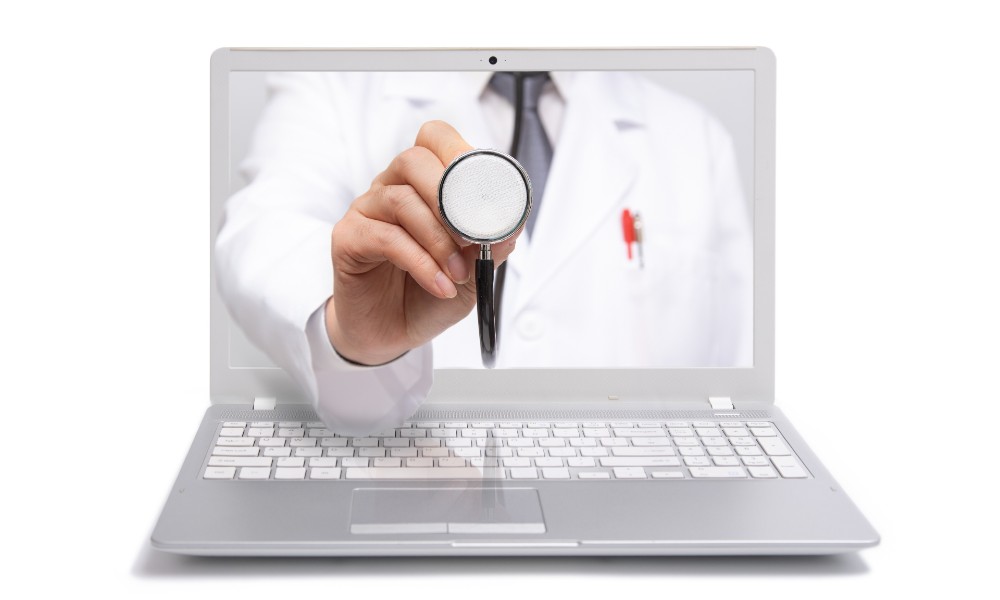
When the COVID-19 pandemic began, a myriad of industries were put under stress by the fluctuating economy and the shift to remote work. The healthcare industry was no exception to this, being put under possibly the most stress of any industry, as the demand for medical personnel and efficient healthcare work rose drastically. However, the stress put on the healthcare industry has allowed for the rapid acceleration of the telehealth industry, and more specifically the use of connected devices by both physicians and patients to increase healthcare efficiency.
Telehealth has been around for decades. It started in rudimentary form by a simple telephone consultation between a doctor and a patient. However, with healthcare now embracing technology, it has evolved into a video connection over a computer or smartphone with the doctor having the patient’s electronic medical record (EMR) and the ability, with remote medical devices, to get readings of the patient’s vitals. But it’s only since the beginning of the pandemic that the use of telehealth devices have become common in the healthcare industry
Prior to the pandemic telehealth services were used by 15,000 fee-for-service beneficiaries per week. Since March, when the pandemic officially began, roughly 140 new telehealth services have sprung up, with about 25 million people receiving some form of healthcare through telehealth services. This rate of use in the telehealth industry is roughly 60 times the amount from prior to the pandemic, with only more healthcare companies currently turning to telehealth connected devices to handle the increase in patient volume.
We asked Dr. Tina Miranda, Chief Medical Officer and Co-Founder of TeleMedCo, a company that offers a variety of telehealth connected devices, what makes telehealth connected devices so essential to the modern day healthcare process. “Telemedicine transcends time and distance allowing for a consult no matter how far the patient is from a doctor or hospital and no matter the time of day or night,” said Dr. Miranda. “Because of the coronavirus pandemic, this education has been greatly accelerated and telemedicine devices have been fully integrated into the continuum of healthcare.”
Patients are able to track their own health and wellness with the use of different telehealth connected devices, all remotely to ensure pandemic safety. Such devices as thermometers, glucose monitors, and pulse monitors that are all connected via bluetooth allow for patients to take readings themselves, right from the comfort of their own home, and still get these readings to their physicians all in real time.
Telehealth connected devices vastly benefit the patient by giving them more access to their physician during the pandemic almost anytime and anywhere, telehealth devices also have countless benefits to the physician. As patient volume increases due to the pandemic, the need for quick and accurate results becomes greater. Efficiency is greatly improved for physicians, with less waiting time when it comes to results and relaying analysis and health adjustments to the patients.
“A remote doctor can provide treatment, issue an eScript to the patient’s pharmacy, or, if necessary, send the patient to an urgent care center or a hospital emergency room. With the advancement of connected devices, and the growth of the Internet of Medical Things, and the development of advanced AI computing, patients can be monitored in real time,” according to Dr. Miranda. “Remote doctors can securely look at the patient’s medical history, order labs and radiology, and can enter notes into the patient’s record, code the experience and send it to a carrier for billing, while also having access to real time vitals.”
While some consumers aren’t convinced that telehealth devices can offer the same, if not better results as an in-person visit with a physician, the future of healthcare is nonetheless gravitating towards the continued use of these devices by both sides of the healthcare process.
“As consumers seek out healthcare experiences that more closely align to the experiences they have in other industries in terms of ease of access, instantaneous answers, and transparency, telehealth devices constructed in the right fashion, provide an opportunity to do just that,” said Dr.Miranda. “This phenomenon is augmented by the presence of the novel coronavirus which is propelling consumers to telehealth. This is a kind of turning point for virtual health. We’re actually seeing how it can be used in a public health crisis.”
Throughout the pandemic, telehealth devices have shown themselves to be an incredibly valuable tool for medical providers, so it makes sense that medical providers are showing an interest in the technology. Roughly 90 percent of U.S. hospitals plan to expand their telemedical services and turn towards the use of telehealth devices in the coming year.
Even after the pandemic comes to an end and the spread of COVID is under control, the telehealth industry will continue to expand as more advantages of these connected devices are found by those working in the healthcare industry. “Once this hurdle is overcome, though, physicians absolutely stand to benefit from making telemedicine devices available to their patients,” Dr.Miranda said. “In other words, the future is bright for the telehealth industry.”
Edited by
Maurice Nagle





